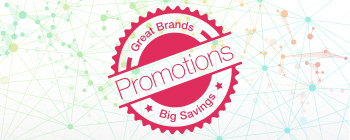Gated Membranes Improve Water Filtration
By Iva Fedorka
A recently published update on a biologically inspired filtration mechanism shows promise as a method to reduce membrane failure and increase throughput.
What Is Membrane Filtration?
Membrane filtration is a commonly used method for removing particulates and other contaminants from liquids. Industries like water treatment, chemical and petrochemical industries, food and beverage processing, biopharma and bioprocessing, and textile/paper/pulp all depend on membrane filtration. Filtration helps manufacturers achieve the necessary levels of purity, selectivity and throughput.
However, filters can become “clogged” or fouled, and membranes can deteriorate to the point of ineffectiveness. Researchers have explored various modifications to address these concerns: surfactants, coatings, chemical grafting, polymer blends, and plasma treatments. The method known as liquid gated membranes (LGMs) seems to address some of the limitations of these alternatives.
The Current Situation
The domestic boom in shale oil and natural gas wells has contributed to the stress placed on surface and ground water supplies, with large amounts of water (approximately 6 × 106 gallons) needed per well. Thermal distillation, reverse osmosis membrane systems, chemical precipitation, electrocoagulation, and filtration are the current preferred methods to remove suspended solids and reuse fracking fluids.
In water treatment, deposits or the adhesion of colloids and organic/inorganic particles to membrane pores and surfaces is the greatest challenge associated with microfiltration (MF) and ultrafiltration (UF) processes. Over time, the fouling increases hydraulic resistance, reduces filtration flux and detrimentally affects efficiency and economics.
Filtration issues have a direct effect on energy consumption and carbon dioxide emissions:
- Municipal wastewater treatment is responsible for ∼18 percent of total water-related carbon emissions
- Electricity demand for wastewater treatment is projected to increase more than 20 percent (to 90 × 109kWh/yr. or 0.3 Quads) by 2050
LGM Theory
LGM filters trap an immiscible liquid in the pores of the membrane to provide a smooth lining to the pore surfaces. The tension between the solution and the membrane surface is minimized, along with the amount of pressure required for active filtration. LGM parameters can be varied for filtering complex mixtures and for different filter media.
The presence of the gating also creates a barrier against the materials being absorbed into the membrane material. When liquid is trapped inside porous membranes, it acts like a control or gate that can adjust the transmembrane pressure (TMP), permit phase separation, and reduce build-up from particle filtration (PF), MF, and UF processes.
New Possibilities
As published in APL Materials, researchers at the Harvard University Wyss Institute for Biologically Inspired Engineering, along with collaborators at Northeastern University and the University of Waterloo have developed a new version of an LGM that (compared to conventional membranes):
- Is twice as efficient (throughput)
- Takes three times longer to foul
- Requires 10 to 15 percent less pressure (TMP)
- Reduces irreversible fouling by 60 percent
- Returns to baseline pressures after backwashing
- Uses less water to backwash
Next Steps
This study focused on the filtration performance of LGM technology for separating inorganic microparticles from an aqueous feed. (Hydrophilic bentonite suspension was tested to mimic the wastewater produced by oil and gas drilling operations.)
Although LGMs and more conventional filters were all eventually fouled by the suspension, the positive performance of the LGMs partially validates the technology and offers the possibility of reduced costs and electricity consumption related to filtration.
Additional research is needed to further test the LGM mechanism, and to demonstrate its feasibility for water treatment, bioprocessing and other industrial and high-impact processes.
This study was funded in part by the Advanced Research Projects Agency-Energy and the U.S. Department of Energy. The research was performed, in part, at the Center for Nanoscale Systems, part of Harvard University and a member of the National Nanotechnology Coordinated Infrastructure Network (supported by the National Science Foundation).



